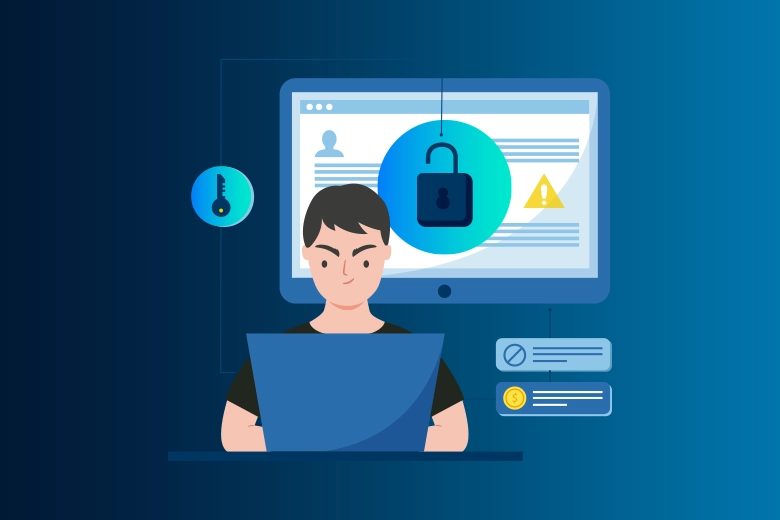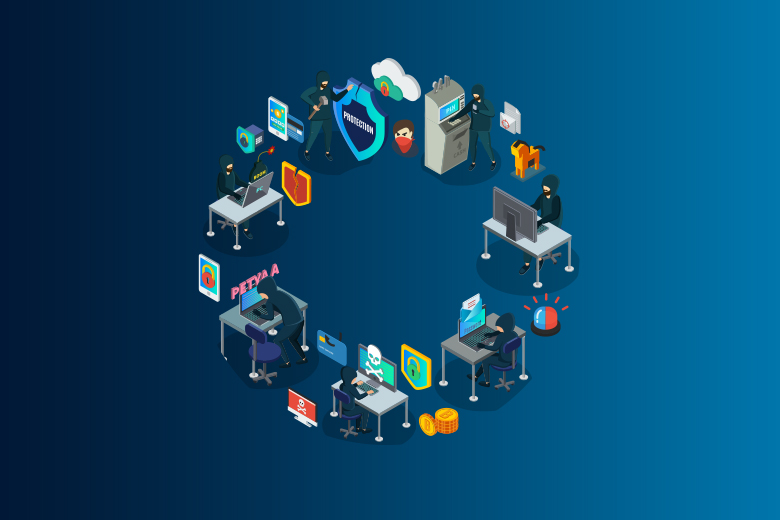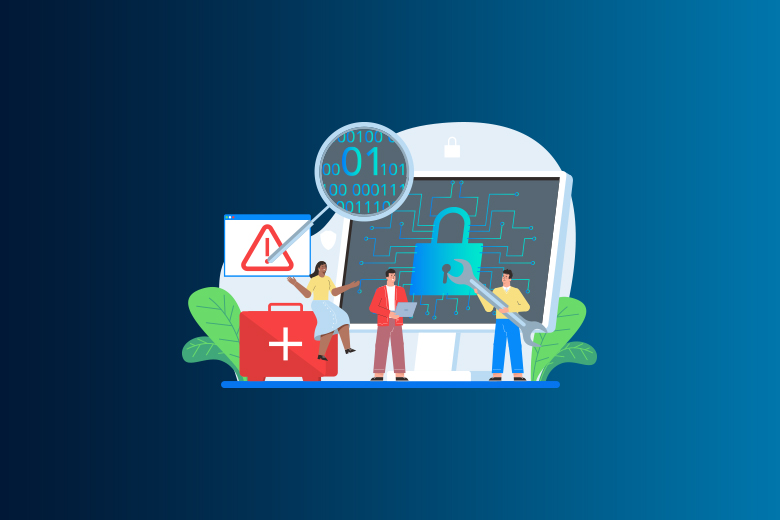11 December 2023
SafeAeon Inc.Using threat intelligence has become one of the most important parts of managing vulnerabilities well. With cyber threats getting smarter, it's more important than ever to find them and stop them in a thorough and proactive way. It's not enough to just respond to threats; you also need to plan for them, understand how they work and put plans in place to stop them. Businesses can move from a reactive to a proactive security stance by incorporating threat intelligence into vulnerability management processes. This makes it easier for them to respond quickly and effectively to cyber threats. In today's digital world, this method is very important because a security breach can cost more than just money; it can also hurt a company's reputation and trustworthiness.
How do you get Threat Intelligence?
When it comes to modern IT, hybrid cloud protection is very important. In complicated IT systems, it makes sure that data, services, and equipment are safe. Workload mobility and management across different IT systems are common features of these frameworks. There must be at least one public or private cloud like AWS, Microsoft Azure, or Google Cloud in this list.
It is important to understand that keeping private information and resources safe requires everyone to work together. This duty is split between businesses and the cloud service companies they use. Businesses need to protect their application layer, while service providers focus on protecting the infrastructure. They can do this by following best practices, which is what this piece is all about.
The hybrid cloud model has a number of important benefits. Some of these perks are the ability to grow, lower long-term costs, better control, faster speeds, and higher security. This guide is meant to help you get through the tricky parts of hybrid cloud security. We aim to provide you with the information needed to get the most out of these perks.
What Are The Components Of Hybrid Cloud Security?
Hybrid cloud security is made up of three important parts, and each one is very important for total safety:
- Physical Controls: These protect the parts of your cloud hardware that you can see and touch.
- Technical Controls: These are used to keep your IT systems and data processing activities safe in the digital world.
- Administrative Controls: These deal with things that people do, like natural disasters and acts that affect security.
Learning About Physical Control
When you set up physical controls, you protect the hardware that is at the heart of your mixed cloud.
- Securing Hardware Locations: Protecting places where hardware is kept safe includes keeping data centers, server rooms, and other important equipment safe.
- Access Restrictions: To keep people from getting into these sensitive areas without permission, put in place strict access controls.
- Surveillance and Monitoring: To keep a close eye on important assets, use CCTV cameras, motion detectors, and monitoring systems.
- Reliable Power Backup: Use backup generators and uninterruptible power sources (UPS) to keep things running even when the power goes out.
- Service Level Agreements (SLAs): Make sure that cloud service companies follow your physical security standards by agreeing to clear SLAs.
Getting to Know Technical Controls
Your hybrid cloud security plan's digital shield is made up of technical limits.
- Robust Encryption: Encrypt both data that is at rest and data that is being sent. Even if it is monitored, SSL/TLS encryption is necessary to keep data safe.
- Automated Setup: Automated provisioning and setting cut down on mistakes made by people, making sure that the security is the same across the hybrid cloud.
- Effective Orchestration: Use technology to coordinate the different security tools, systems, and processes so that they all work together smoothly.
- Comprehensive Access Control: Make sure that only people who are allowed to see sensitive data can access it by putting in place strict access policies and processes. Adopt the idea of "zero trust" and only allow entry when it's necessary.
- Endpoint Security Measures: Protect possible entry points from phones and computers. Put in place ways to delete data or block access in case the device is lost or stolen.
Controls over administration: everyone has a role to play
- Training for Everyone: It's important to teach workers and contractors the best ways to keep your data safe in the cloud. Make sure that this training fits their unique jobs and roles.
- Using the public cloud for safety: Hybrid clouds combine private and public clouds, giving you a lot of choices for recovering data and preparing for disasters. The public cloud can be used to back up the data and apps that you have on-site.
How to Keep Your Hybrid Cloud Safe?
- Sort your data and keep it safe: Find out how safe your info is. This helps you choose how to keep it safe and store it. Take steps like encrypting and controlling who can see what.
- Manage who can get in: Put in place strong controls for entry. Role-based access and identity management can help you make sure that only the right people can get to private information. To protect yourself from advanced attacks, use a "zero trust" strategy.
- Keep your networks safe: This kind of cloud spreads out your info. You can keep it safe by using firewalls, cloud workload safety, and dividing your network into safe sections.
- Manage your keys and encrypt them: Protect data at all times, whether it's being moved or kept. Make sure that only people who are supposed to can get to your security keys.
- Stay Aware and Prepared: Always keep an eye out for security threats. Prepare an incident reaction plan that spells out who is responsible for what, how to report problems, and how to talk to people during an incident.
What Are Hybrid Cloud Security Challenges?
1. Dealing with Complexity
- Visibility Problems: As cloud use grows, it gets harder to keep track of all the systems, which makes it more likely that security breaches will go unreported.
- Problem with Monitoring: Constantly looking for threats in a lot of different cloud environments is hard and needs complicated tools and plans.
2. Safety in Getting-In
- Access Control: It's important to keep track of who can access data across different clouds to stop leaks and illegal use.
- Hybrid Environment Risks: In hybrid clouds, the fact that there are multiple access points makes it harder to keep private data safe.
3. Data on the Way
- Secure Transfer is Important: When moving data between clouds, the routes must be encrypted to keep them from being hacked or changed without permission.
- Movement Vulnerability: Data is most at risk when it's being sent from one place to another, especially if it's not encrypted and protected properly.
4. Problems with configuration
- Risk of Misconfiguration: It's easy to miss an important security setting when data and apps are spread out.
- Complex Settings: It's hard to make sure that security settings are the same in a lot of different places.
5. Making sure you follow the rules
- Compliance Complicated: It's harder to follow laws like HIPAA and GDPR when you have data in more than one cloud.
- Industry-Specific Problems: Compliance problems are unique to each industry, especially in the healthcare and banking sectors.
6. Compatibility with Tools
- Finding the Right Tools: Tools that work great in private clouds might not work so well in public clouds.
- Problems with Integration: Putting security tools together on different cloud platforms can be hard and complicated.
7. Agreements about service levels
- SLA Challenges: Relying on the public cloud can make it hard to deal with SLA problems because you don't have much control over how the provider runs their business.
- Concerns about visibility: Not being able to see how a cloud service works can make it take longer to find and fix problems.
Best practices for hybrid cloud security
Making data safer when using the cloud
Increasing amounts of data: As more people use the cloud, more data is kept, which means that stronger data protection measures are needed.
Complex Data Handling: It's hard and requires a lot of care to keep track of how data is stored and sent across many systems and users.
Planning and evaluating in detail
Assessment of Security Needs: When businesses move to hybrid clouds, they need to do a full assessment of their security needs.
Choosing the Right Companies: This means picking cloud service companies that can meet these security needs and work with the company's security standards.
Monitoring that is regular and thorough
Companies shouldn't just rely on cloud providers to keep an eye on things; they should also set up their own monitoring tools.
Internal Monitoring Systems: Setting up thorough internal monitoring helps find security holes and attempts to get in without permission.
Methods for Encrypting Data
Securing Data at Rest and in Transit: Encrypt both data that is being sent and data that is kept on drives.
Encryption of Network Sessions: For extra protection while data is moving, make sure that network communications are encrypted.
Automation for security
Taking Care of the Difficulties of Hybrid Clouds: Automated security systems are essential for finding and fixing security problems in hybrid cloud settings.
Automated Threat Detection: Setting up network devices to produce relevant security data speeds up the process of finding possible threats and responding to them.
Conclusion
More than just tactics are needed to deal with the security problems that come up in hybrid clouds. It's also important to know important numbers and facts. 94% of businesses use a cloud service right now. A hybrid cloud approach is used by 87% of these. This makes it very clear that strong security steps are needed. This guide shows you how to deal with these problems. It puts a lot of emphasis on constant tracking, careful planning, and full data security. By 2023, the mixed cloud market should be worth $97.64 billion. It is very important to adapt to changing protection needs. With SafeAeon, you can ensure operations run smoothly in this ever-changing environment and make sure that private data is kept safe.














